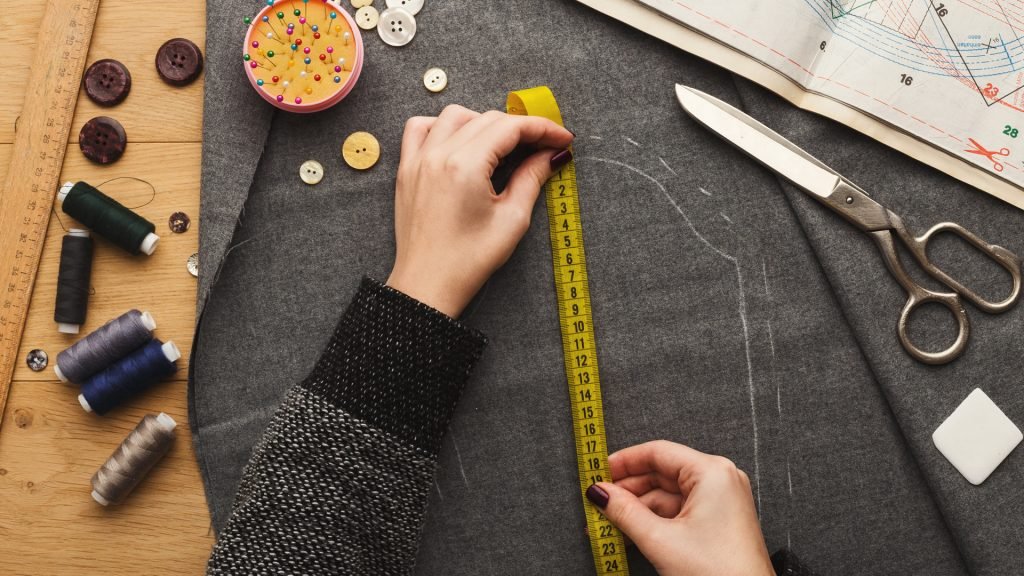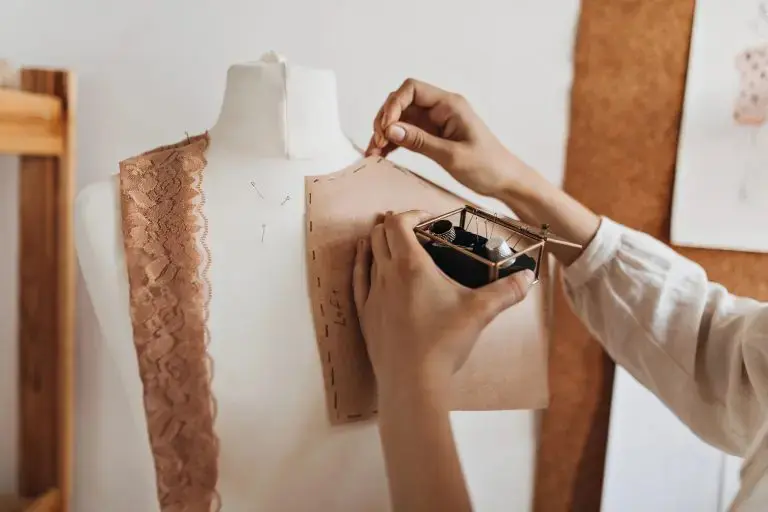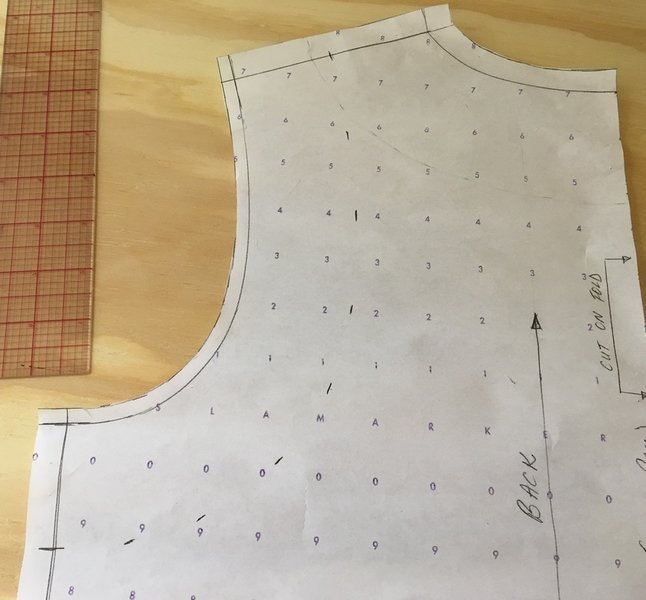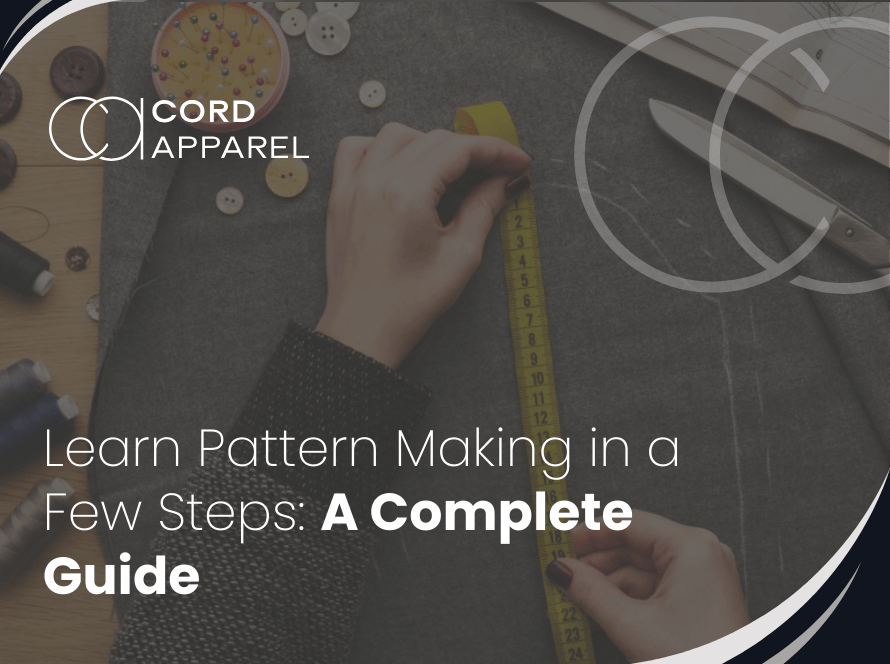Essential Steps For Pattern Making
Do you want to learn how to create your own clothes patterns? Pattern-making may appear intimidating if you’ve never done it before, but it’s actually simpler than you think if you understand the basic processes and approaches. In this beginner’s guide, we’ll break down the pattern-making process into easy steps to get you started.
What is Pattern Making
Have you ever wondered how clothing is designed from concept to finished product? Well, patternmaking plays a huge role in bridging that creative gap. In simple terms, we can describe it as the process of creating templates or blueprints for garments. These patterns serve as guides for cutting and sewing fabric in a way that will result in the three-dimensional garment aligning with the designer’s vision. It’s basically how we take a flat two-dimensional style sketch and transform it into something people can wear!
The patternmaker thinks through details like shaping, fit, and ease of movement – essentially translating abstract ideas into real-world form. We rely on their templates to ensure garments fit properly on the body and function as intended, whether an activewear piece or formal ballgown. Without good patterns, a designer’s beautiful creations might not hang or drape in quite the right way. So the next time you put on a well-made outfit, think of the patternmaker behind the seams – crafting instructions that connect imagination to reality through precise technical drawings. It’s no small task taking clothing from mind to shelf!

Methods of Pattern Making
So we’ve chatted about what patternmaking is, but did you know there are different ways to go about the actual process? The two main methods designers rely on are draping and drafting – let’s break them down.
Draping
Draping is a bit more freeform and involves directly manipulating fabric on a dress form to develop the structure and pieces of a garment. Some designers love this hands-on approach because it allows for really playing with the drape and fall of the fabric. Great for one-of-a-kind pieces or more complex silhouettes.
Drafting
Drafting, on the other hand, involves drawing the pattern pieces on paper first using measuring techniques. It’s a more technical, systematic process where each piece is drafted individually. This method works well for replicable designs since the patterns can then be used over and over.
In reality, many patternmakers use a mix of both – drafting the basics then draping fabric to refine. It all depends on their style and the complexity of what they’re designing. Overall, the goal is the same – turn ideas into wearable clothes! But it’s cool to know the different workflows.
Crucial Steps in the Patternmaking Process
Patternmaking may sound like an intricate science, but breaking it down into steps makes the process more manageable. Here are a few things designers really focus on to ensure their creations turn out perfectly:

Placement of Armholes and Necklines
When starting the patternmaking process, one of the first things designers need to focus on is figuring out just where the armhole and neckline openings should be positioned. These details are so crucial to how comfortable and well-fitting the finished garment turns out.
A lot of consideration goes into determining the best possible placement for the armholes and necklines. Patternmakers have to think about what will flatter different body types while also allowing a full range of motion. Too high or low can really affect how restrictive or gape-y a piece ends up feeling.
You can imagine they do a fair bit of trying things out – draping muslin scraps, marking different options directly on their pattern pieces, and test-fitting mock-ups. This trial and error help pinpoint exactly what provides the most natural silhouette and ease of wear. Every little adjustment at this beginning stage can impact how polished the real garment looks in the end.
It’s no wonder they put so much focus into nailing these openings right from the get-go. When something as simple as the armhole cut is off, it can ruin the entire vibe and functionality of an outfit. Taking their time to study fit and fluidly execute these key features is what allows designers to create apparel people feel truly comfortable and confident in. First impressions really do matter in patternmaking!

Drawing Pocket Details
Another really important thing patternmakers tackle early on is adding pocket details to the patterns. Where and how big should the pockets be? These may seem like little things, but getting them correct makes for a well-crafted finished product.
When first drawing up the pattern pieces, designers have to pinpoint exactly where any pockets will sit. Proper placement ensures they’ll line up nicely and serve their purpose on the actual garment. It’s not so simple as just scribbling a random pocket shape wherever – these things need accurate markings.
I’m sure designers do meticulous measuring and hold test fittings to determine ideal pocket cuts and sizes too. Not too small to be useless but not overly big and bulky either. Taking the time to thoughtfully design these functional elements shows quality workmanship.
If pockets ended up slanted or misshapen down the line, it’d affect how polished the clothing feels. Consumers expect attention to detail, even on minor features. So incorporating pockets precisely at this early planning stage sets designers up for success in creating apparel people love.

Working with Sample Fabric
When working out those early patterns, most designers will do test runs with sample fabrics first before diving into the real deal materials. It’s a smart step to work out any kinks.
By assembling mockups using cheaper muslin or scrap fabrics, patternmakers can do full fittings and really evaluate how all the individual pattern pieces come together. They’ll be able to see if any tweaks need to be made – like taking in a waist dart here or lengthening a sleeve there.
It’s the perfect way for them to ensure everything flows proportionally before cutting expensive final fabrics. Issues that maybe didn’t come up on test garments are more likely to show at this stage.
Much better to find and fix problems at this point rather than after cutting expensive fabric and doing extensive sewing. Samples save money by allowing designers to refine fit and tweak designs freely until fully satisfied.
Once patterns pass the sample tests with flying colors, I’m sure patternmakers feel much more confident cutting into the good materials knowing all the fittings and adjustments are complete. It’s a smart part of the process to avoid costly mistakes down the road.

The Importance of Understanding Pattern Pieces
When you’re patternmaking, it’s super important to really understand how all the individual pattern pieces are meant to fit together to create the full garment. Each piece on its own is just part of the bigger picture, you know?
Unlike cutting out a pre-sewn item where you’re working with already stretched and formed fabric, patternmaking requires precise planning and cutting each section in advance. If you don’t have a clear vision of how all the back pieces, front pieces, sleeves, etc will logically assemble, it can throw off the fit or cause unwanted distortion later on.
Being able to mentally picture the complete outfit coming together from all its separate components is key. It’s not enough to just draft nice-looking individual parts – you have to grasp conceptually how they’ll align in reality.
Having that big-picture view of the construction is important for producing garments that hang properly without gaps and keep their intended shape through the wear and tear of normal use. It also helps designers troubleshoot and avoid expensive do-overs by catching any issues before production.
At the end of the day, a full comprehension of pattern piece placement is vital for creating well-made clothing that fulfills the designer’s original form and function goals. The outfit has to look and perform as planned once worn.

Conclusion
So in summary, patternmaking is really an important part of the design world – it’s what bridges the gap between ideas on paper and actual clothes people can wear. Designers have to pay close attention to details like armhole placement, neckline cuts, and even pocket positioning if they want their items to turn out well-fitted and polished.
That’s where doing sample tests comes in handy. It lets them work out any kinks or proportion issues before committing to pricier fabrics. Having a full understanding of how all the individual pattern pieces will come together is also key for producing garments that keep their intended shape.
At the end of the day, really learning the ins and outs of patternmaking is crucial for any designer looking to successfully bring their creative concepts to life. If they can master this process, it allows them to put out garments customers will form true connections with. The pattern is what allows an eye-catching sketch to become a cozy sweater or statement blazer people feel confident wearing. It’s an important stepping stone towards making fashion that resonates.
For those looking to start their own clothing brand, check out our guide on how to start a clothing line. Proper patternmaking will be an essential skill as you bring your designs to market.



Leave a Reply